9 times nature was totally metal in 2021
Remembering the plasma hurricanes, tortoise assassins and dinosaur fight clubs that made 2021 heavier than a black hole.

"Nature is healing" is a popular refrain we've heard time and again over the last two years. Sure … tell that to the baby bird who had its head bitten off by a rampaging tortoise in the Seychelles, or the fish in Texas who woke up to find its tongue replaced by a bloodthirsty parasite.
Nature is, and always has been, brutal, awesome, epic and heavy as a black hole's empty heart. In 2021, things were no different. Here are 9 of our favorite times when nature was totally metal this year.
1. The fish with parasitic lice for a tongue

In the end, all things die and become bug food. Sometimes, death is not a prerequisite.
Take this unfortunate Atlantic croaker caught off the coast of Texas just before Halloween. When fishers cracked the croaker's mouth open, they found that its tongue had been replaced by the parasitic isopod (see: armored sea bug from hell) known as the tongue-eating louse. Females of this species enjoy the cheery job of infiltrating a fish's mouth, latching onto the blood vessels below its tongue, then sucking the organ dry until it rots away. The louse gets a cozy new home, where she continues to feed on blood and mucus for the duration of the fish's life — which, surprisingly, isn't much impacted by the parasitic squatter in its mouth, Live Science previously reported. Don't you just love when animals get along?
Read more: 'Tongue-eating' lice invade fish's mouth in this year's creepiest Halloween photo
2. The ancient T-rex fight club
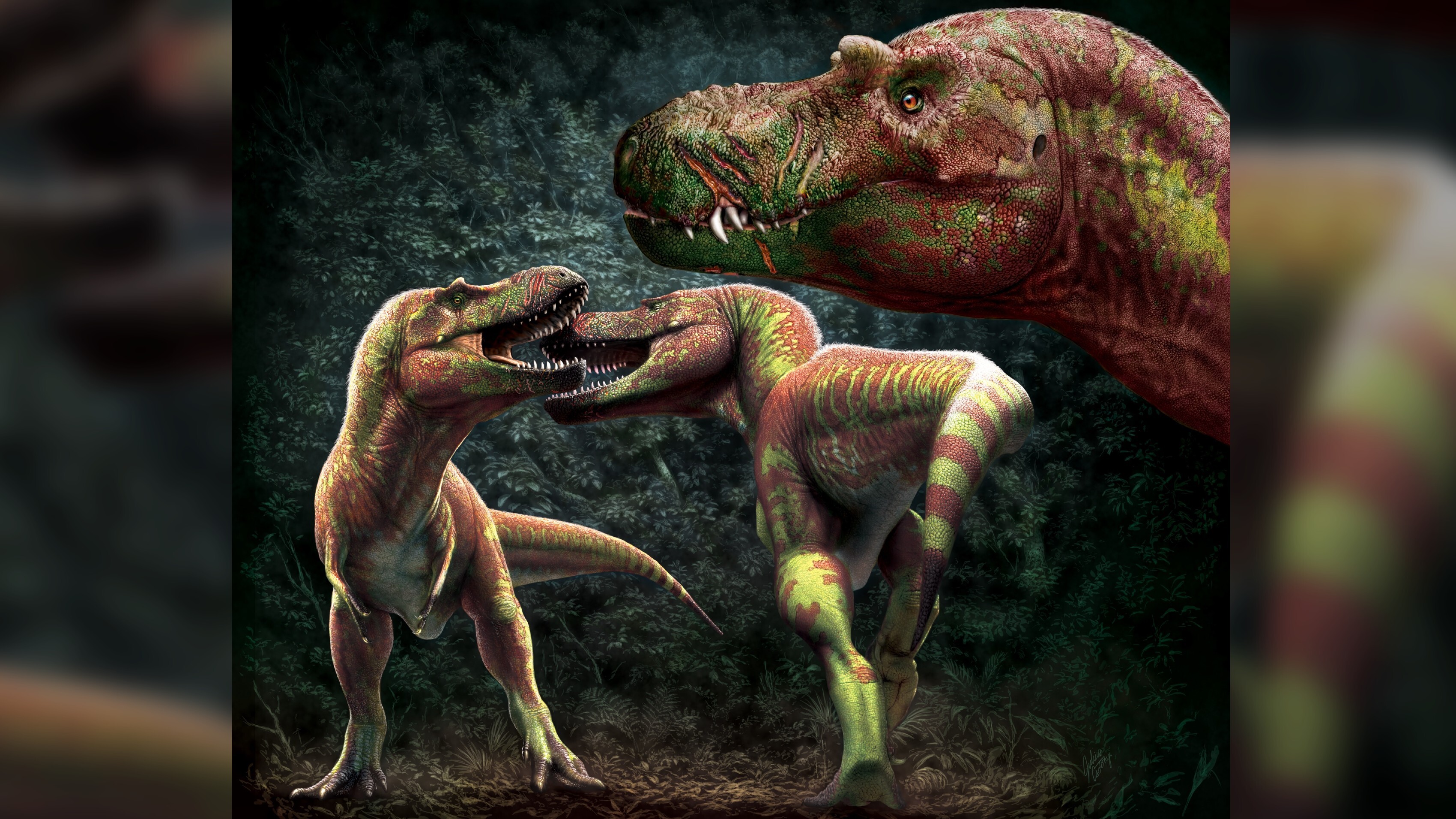
With banana-sized teeth and a bite force that could crush a car, T. rex and its cousins were arguably the most brutal animals that ever lived. What did these killers do when there was no prey around to slaughter? Why, they fought each other in back-alley tyrannosaur fight clubs, according to new research in the journal Paleobiology.
In their study, researchers analyzed 202 tyrannosaur skulls and jaws that had a total of 324 scars. The team found that none of the young tyrannosaurs had any bite marks, while about half of the older specimens were slashed with scars. These seasoned fighters "were likely posturing and sizing each other up, then trying to grab each other's heads between their jaws," lead study author Caleb Brown, a curator at the Royal Tyrrell Museum in Alberta, Canada, told Live Science at the time. The tyrannosaur-on-tyrannosaur fights could have been over territory, mates, meals or just status, the researchers added.
Sign up for the Live Science daily newsletter now
Get the world’s most fascinating discoveries delivered straight to your inbox.
Read more: Tyrannosaurs bit each other's faces in dino fight clubs
3. The great Jersey 'worm tornado'
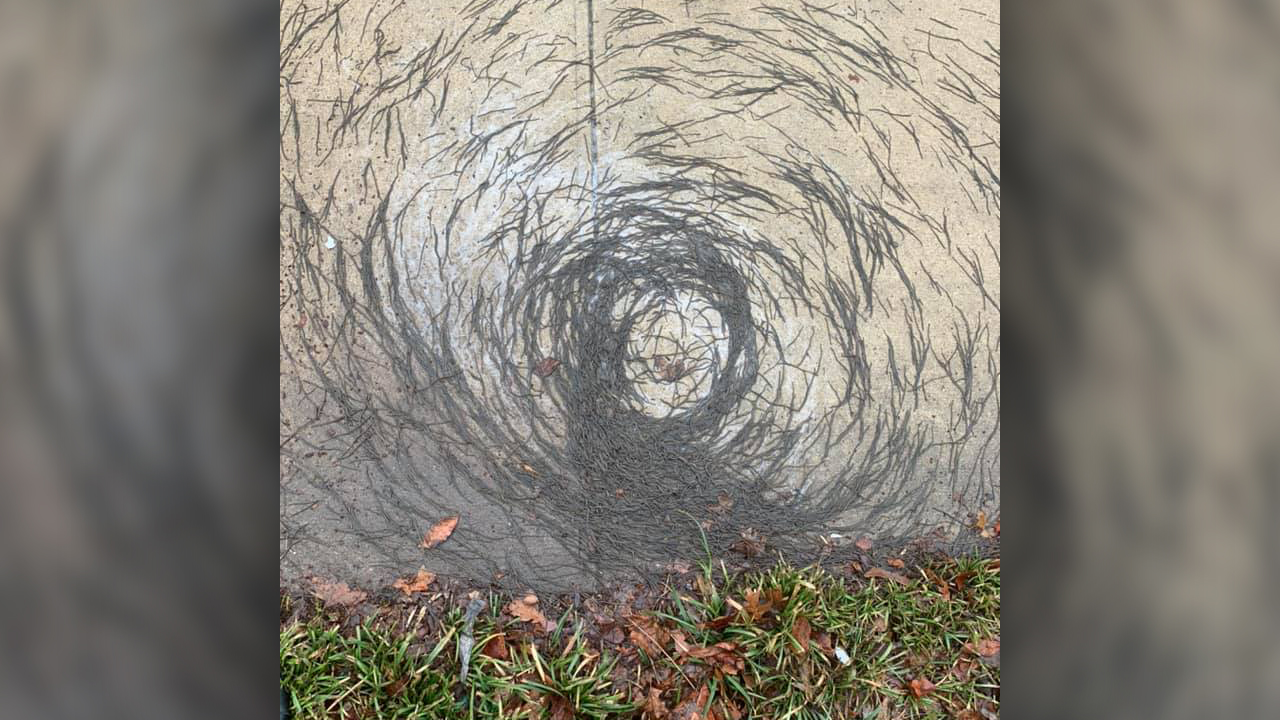
We're not sure if "wormnado" is an official sign of the apocalypse, but it's halfway to a Biblical plague, at the very least. Residents of a New Jersey town encountered this freaky scene when on the sidewalk after a spring rain in late March. Hundreds of words spread across the sidewalk, with even more contorted into a bizarre spiral shape where the pavement met the grass. What is the meaning of this horror? Experts told Live Science that the worms likely fled the soil en masse after heavy rains the night before, seeking the air above (worms breathe through their skin). The spiral pattern may just be a coincidence, or could indicate the direction of the water flow, one researcher said — but no one could decode this dark omen for sure.
Read more: Bizarre 'worm tornado' in New Jersey has scientists baffled
4. The 'space hurricane' over the North Pole

Unphased by the worm tornado? Then look north, friends, to the 600-mile-wide (1,000 kilometers) hurricane of plasma that whirled over Earth's magnetic North Pole for nearly 8 hours. The towering vortex was invisible to the naked eye, but appeared clear as day on four weather satellites that passed by. Like terrestrial hurricanes, the plasma cyclone had a quiet "eye," a funnel and counterclockwise-spinning spiral arms — but, instead of raining water, the vortex showered the upper atmosphere with crackling electrons.
Though this so-called "space hurricane" raged in 2014, scientists just got around to studying it this year, publishing their results in the Feb. 22 edition of the journal Nature Communications. The team hypothesized that the hurricane resulted from a complex interaction between incoming solar wind and the magnetic field over the North Pole. Scientists didn't even know space hurricanes existed before this year; Now, researchers suspect they may be common phenomena on planets with a magnetic shield and plasma in its atmosphere. Something to keep in mind if you're planning any interplanetary travel this holiday.
Read more: First-ever 'space hurricane' detected over the North Pole
5. The bird-hunting assassin tortoise

Tortoises are cute, wrinkly grandma reptiles without a vicious bone in their bodies, right? Wrong — especially if you're a baby bird.
Shocking footage shared in the journal Current Biology in August shows, for the first time ever, a killer tortoise on the hunt. In the video, a female Seychelles giant tortoise lumbers across a log in the Seychelles archipelago, determinedly advancing toward a young tern. The bird pecks back as the tortoise barrels down, but the reptile is undeterred; after a 90-second chase (that's breakneck speed, in tortoise time) the wrinkly hunter clamps its serrated beak around the bird's head, killing it instantly.
This is the first video evidence of a tortoise hunting another animal — but it's almost certainly not the tortoise hunter's first kill, the study authors said. This reptile clearly had experience hunting terns on logs; that makes this tortoise a literal cold-blooded killer.
Read more: Tortoise hunts baby bird in slow-motion, crushes its skull in shocking video
6. The cheetahs that fought a river (and won)
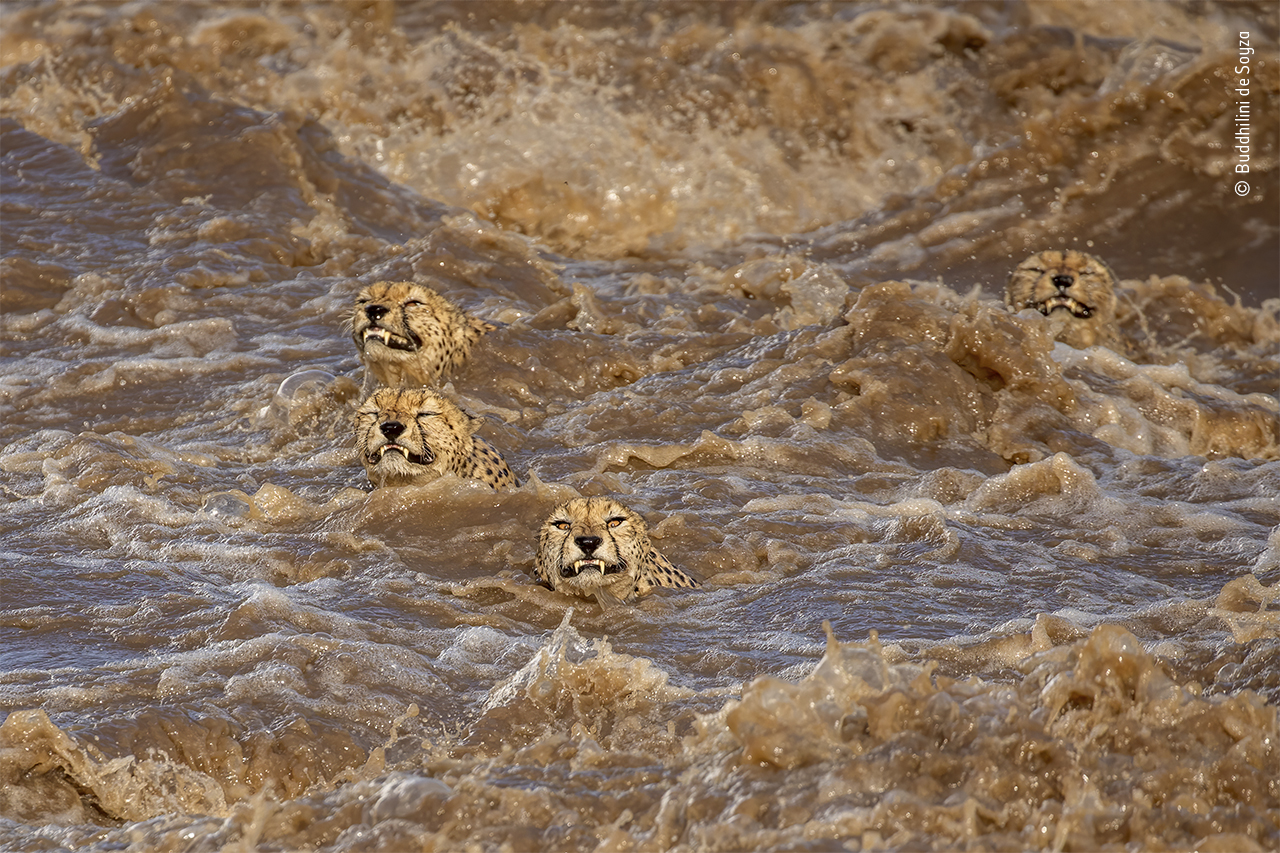
It turns out that cheetahs are even more metal than we thought. Well known as the world's fastest sprinters, these great cats are also powerful swimmers, undeterred by raging rivers. A photograph taken near the Talek River in Kenya shows as much, with four determined-looking cheetahs paddling like crazy against the choppy waves.
The crossing was no picnic. According to photographer Buddhilini de Soyza, the river's current dragged the cheetahs about 330 feet (100 meters) downstream — and pulled one of the cats underwater for nearly 20 seconds — but ultimately, they all made it across. The purpose of this death-defying journey? Either the cats knew they were having their picture taken and wanted to give us a new reason to fear them — or, more likely, they were looking for food. De Soyza said he saw the pack successfully hunt a wildebeest on the same side of the river a few days later. (This photo was a highly commended entry in the 2021 Wildlife Photographer of the Year competition).
Read more: Cheetahs battle raging river in stunning photo. Did they survive?
7. The organ-swallowing murder snakes
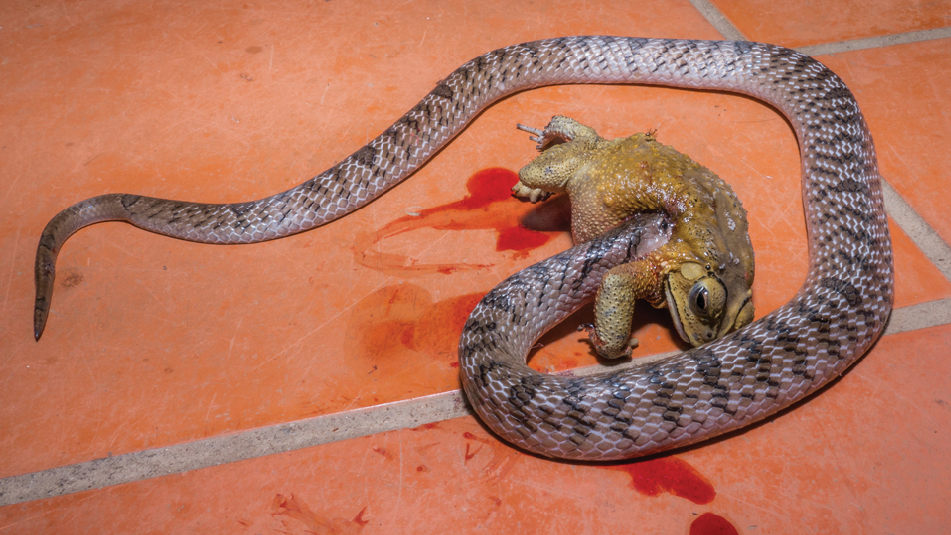
Snakes frequently make these little lists of ours, probably because they have simplified the carnivorous body plan to a fine art; snakes are basically just murderous mouths attached to hungry stomachs — all killer, no filler.
This year's recipient of the Most Metal Serpent award is the knife-toothed kukri snake of Thailand. Put one near a banded bullfrog and you'll see why. As research in the Feb. 15 issue of the journal Herpetozoa found, kukris are picky eaters who go straight for their prey's internal organs. They do this by biting a hole in the unfortunate frog's side, shoving their heads into the body cavity, then shaking the still-living frog around in a series of "death rolls," possibly in an attempt to liberate the frog's organs from its abdomen. In several encounters, the snake went on to swallow its froggy prey whole after eating its organs. Who doesn't like a little dessert?
8. The mind-control fungus that turns flies into necrophiles
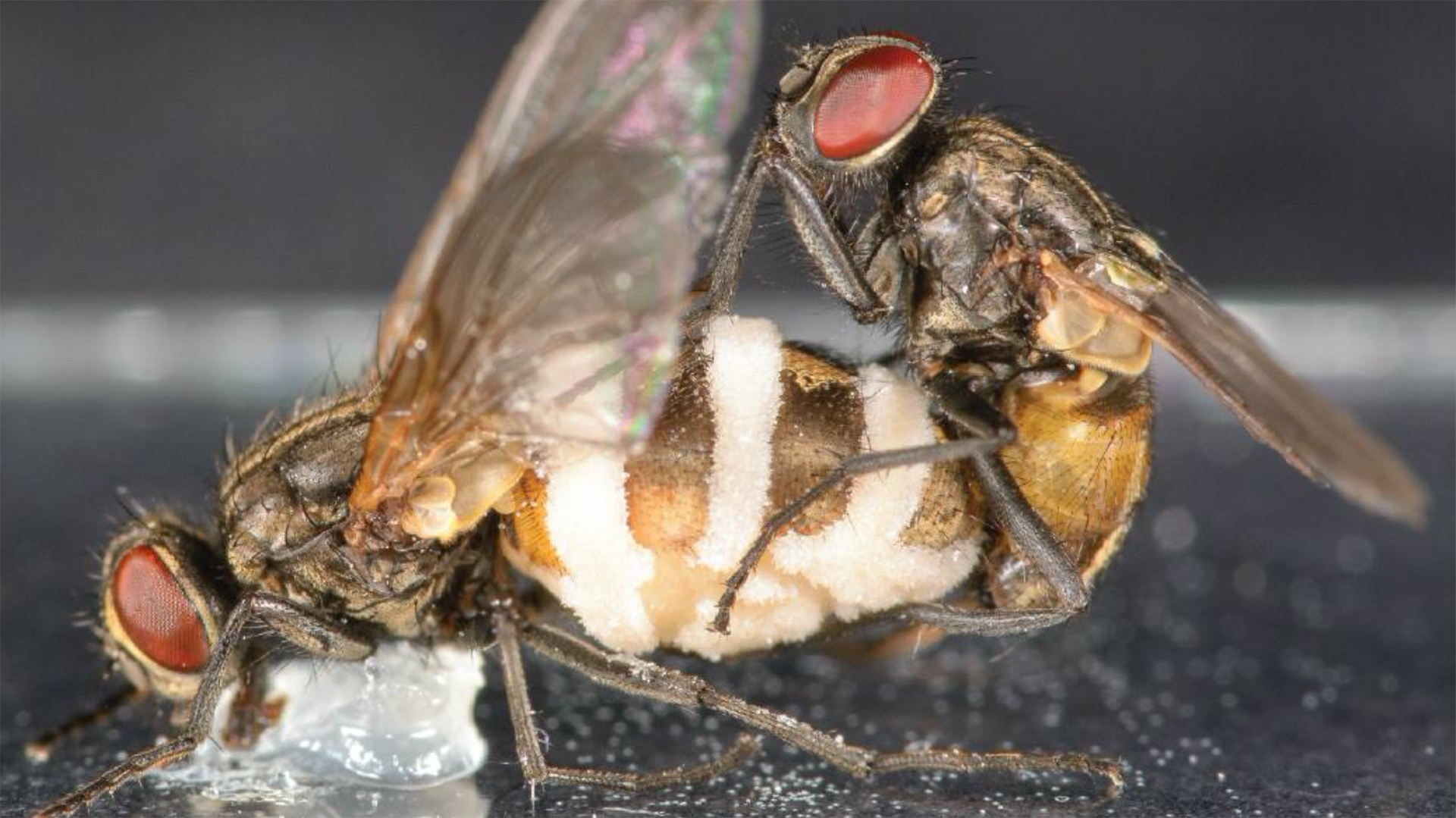
Of course, some killers don't need fangs to empty their victims from the inside out. The pathogenic fungus Entomophthora muscae plays a longer game with the house flies it preys upon — first taking over the fly's mind and turning it into a living zombie, according to a study published to the preprint database bioRxiv in October. The fungus then manipulates the fly's behavior, forcing its victim to climb to an elevated place, where the fly clings on, stretches out its wings and dies — consumed by the fungus from within. Fungal spores sprout from the fly's wings and body, waiting to infect another victim.
But for female flies, the horror isn't over; researchers found that the fungus also emits an alluring scent to attract male visitors to infected female corpses. The potent scent inspires healthy males to mount the female's corpse, spreading the spores to the male, and — if all goes to plan — on to his friends and neighbors. (Leave it to a fungus to somehow be scarier than a killer snake).
Read more: Mind-controlling fungus makes male flies mate with dead, infected females
9. The goat that gored a grizzly
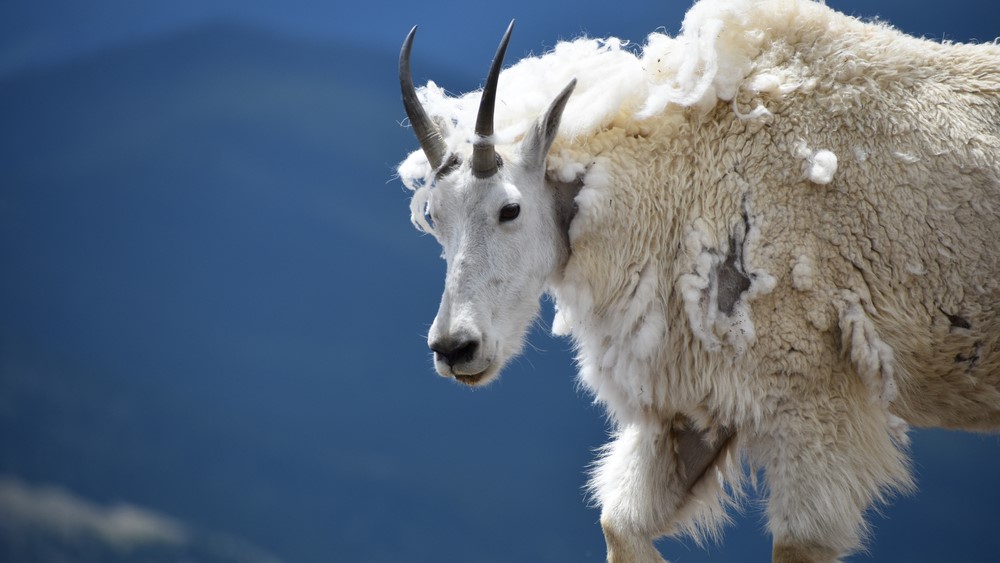
One of the year's most surprising animal battles occurred in the Canadian Rockies in September, when hikers discovered the body of a 154-pound (70 kilograms) female grizzly bear just off a popular trail. When Parks Canada officials investigated the bear's body, they found two stabbing wounds near the grizzly's neck and armpit. A necropsy (animal autopsy) of the bear revealed a surprising killer; the holes were an exact match for the shape and size of mountain goat horns.
According to Parks officials, the bear was probably attacking a goat, when the prey turned the tables on the predator and lashed back with its horns. Other cases of mountain goats defensively killing bears have been reported in the past, experts said, but direct evidence of these encounters is rare. So, let this incident remind any predators out there: If you mess with the goat, you'll get the horns.
Read more: Mountain goat kills grizzly bear by stabbing it with razor-sharp horns
For more totally metal coverage:
-8 times nature was totally metal in 2020
-10 times nature was totally metal in 2019
-9 times nature was totally metal in 2018
Originally published on Live Science.

Brandon is the space/physics editor at Live Science. His writing has appeared in The Washington Post, Reader's Digest, CBS.com, the Richard Dawkins Foundation website and other outlets. He holds a bachelor's degree in creative writing from the University of Arizona, with minors in journalism and media arts. He enjoys writing most about space, geoscience and the mysteries of the universe.









